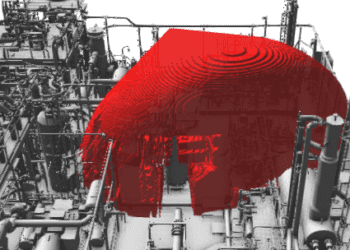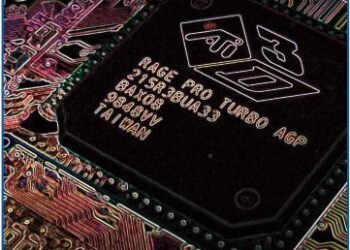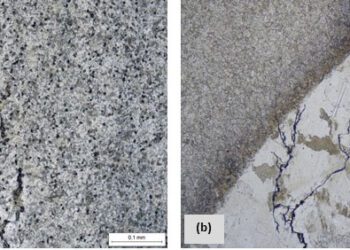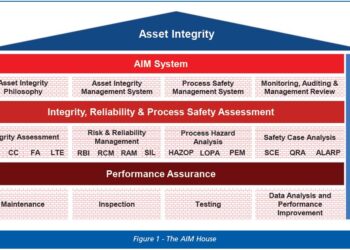The power of RAM modelling: optimising facility performance throughout life
Projects in the energy industry often involve the design and build of complex facilities, necessitating upfront capital investment and ongoing operational expenditure. Decisions made during design can carry considerable risk, both in terms of future profitability as well as the impact that incidents may have on health, safety and the environment.

Image © Shutterstock
To assist, there are a range of assessment tools and methods available which broadly fall into two categories:
- Production assurance to optimise facility operations and output.
- Risk management to ensure that risks are known and sufficiently managed.
Both must be considered as part of an iterative process to arrive at a balanced solution.
WHAT IS PRODUCTION ASSURANCE?
Production assurance activities are those undertaken to achieve and maintain asset performance at its optimum. These activities could be to ensure a system operates at its maximum potential for as much time as possible, or to reliably deliver a product to a customer at a contractually agreed volume and time.
One measure of production assurance, production availability, is calculated by applying the basic techniques of a reliability, availability and maintainability (RAM) study. The critical components and their failure modes are identified (e.g. via failure modes & effects analysis) and a reliability block diagram is developed, building in failure rates and repair times. The design flow rates or relative capacity are also included in the model to assess how failures affect throughput. In this way, the RAM study is no longer limited to determining system ‘up’ or ‘down’ time, instead it enables evaluation of the multiple levels of output from a system, from nil to full capacity.
Understanding the varying output from a facility, along with the predicted duration for which the output can be achieved, allows a realistic estimate to be made of the revenue that can be returned over the facility lifetime.
Consider a simple oil and gas production system that consists of two pumps, each required to operate at full capacity to accommodate the input and maximise output. If the simulation predicts failure of a pump in the first year, then the production rate through the system will temporarily halve for a period until the pump is fixed and reinstated. Eventual repair of the faulty pump may have a further impact on production unless it coincides with a planned maintenance outage. The reduction from full capacity in this case represents lost throughput and lost revenue.
MANAGING COMPLEXITY
Extending this concept to the many equipment items that make up a facility, each with their individual capacity, reliability, maintenance and repair strategy, sparing philosophy, delivery times, and ageing mechanisms, creates a relatively complex problem – which is where RAM modelling software can help. Such tools can simulate the varying effect of equipment failures over hundreds of facility lifetimes to provide a statistically relevant prediction of facility throughput.
Figure 1 illustrates a typical production profile for a facility over its lifetime, taking into account the effect of the many variables on overall production. With such a facility model the financial benefits of design and operational enhancement options can be compared with the baseline case. Crucially, the simulation can be used to identify the main bottlenecks to production to help formulate a targeted improvement plan.
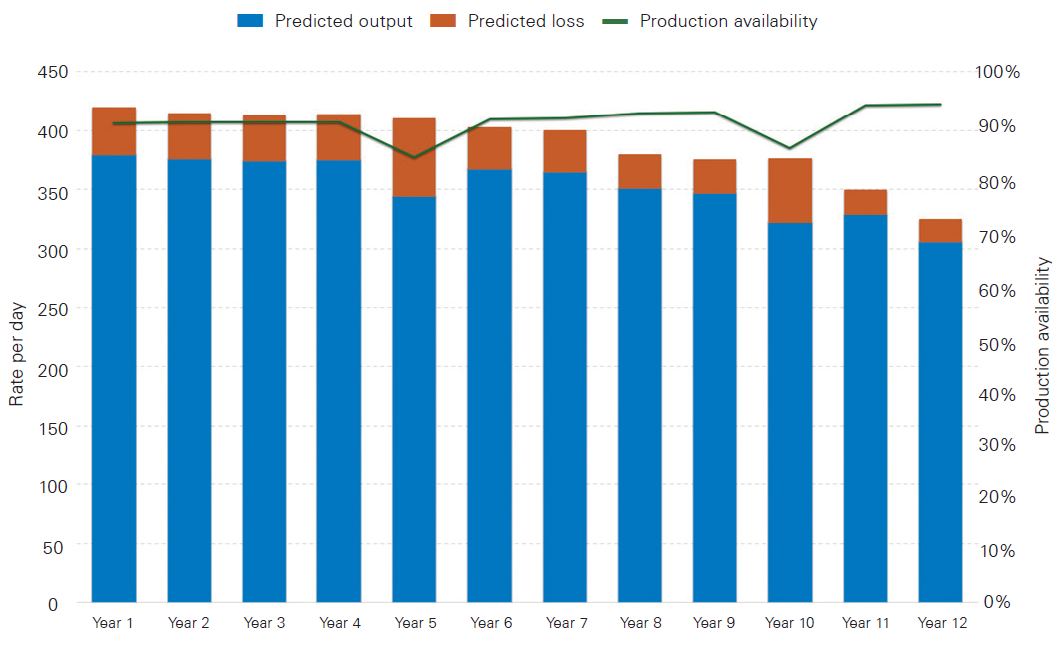
Figure 1 – Typical production profile
A wide range of what-if questions can be considered, such as, “How will another production train affect productivity?” or, “Is it worthwhile holding spare parts in stock to alleviate major bottlenecks?” Once the facility model has been developed, these questions can be answered very quickly with a simple re-run of the simulation.
Such studies can be used to assess the output from any system: be it the lost generation revenue from wind turbine failures, or loss of throughput from a batch manufacturing plant.
CONSIDERING RISK
The method brings clear benefits to production optimisation, but any proposed improvements must also be assessed to determine the impact on risk. For example, more frequent planned maintenance will improve reliability, but will also elevate personnel exposure to hazards. Similarly, adding another live production train will increase the likelihood of a loss of containment, with a commensurate increase in risk levels.
Production assurance and risk assessment often have competing targets, and having the ability to quickly assess proposed changes using both types of study will assist in achieving a balanced solution. In this respect, an iterative process is clearly preferable, with close working between the reliability engineer and the risk assessor.
CONCLUSION
Optimising the resilience of an asset to achieve a strong through-life performance is key to meeting market requirements, achieving customer satisfaction, and building a positive reputation in the long-term. To this end, the traditional RAM study can be extended to assess the expected performance from a complex facility during its lifetime, enabling rapid comparison of design and operational options. When undertaken in tandem with risk analysis, this approach ensures that lifetime performance is optimal and in balance with the associated risks to health, safety and the environment.
This article first appeared in RISKworld issue 33

